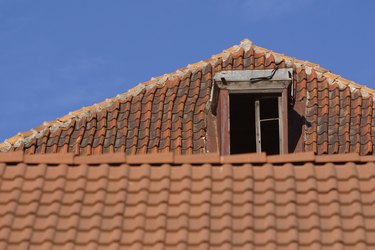
Terra cotta, also commonly spelled terracotta, is a building material created from clay. This material has been used in architecture and building for thousands of years. Terra cotta has become widely utilized because when compared to other building materials, it is cheap and easy to to shape; it is essentially just a clay product fired under specific techniques.
Clay
Video of the Day
Terra cotta is made from clay. However, different types of terra cotta have different names based on where the product is made. This is partly because clay harvested from the ground in any particular region will have a slightly different makeup than clay found elsewhere. However, wherever the terra cotta is made, the first step is finding suitable clay deposits and harvesting the clay from the ground.
Video of the Day
Refining
The raw clay needs to be refined before it is made into terra cotta pots, tiles or other products. This process involves drying the clay and then screening and filtering it to remove impurities that affect the consistency, color and other properties of the clay. Depending on the purity of the clay pit from which the material is removed, raw clay has foreign matter, minerals, rocks and other items that need to be removed during this process.
Molding
Once it has been refined, terra cotta clay is often pressed into molds. Roofing tiles, flooring tiles and architectural embellishments are just a few of the mold types that are used for terra cotta in building material applications. The clay is firmly pressed into the mold so that it takes on the shape before firing.
Firing
Once the terra cotta has been pressed into the appropriate shape, it needs to be fired in order to cook and harden. Terra cotta falls into the category of low fire clay. This means that you must fire it at a lower temperature than many other clays or it will melt. This can damage the kiln as well as ruin the work. Normally, terra cotta is fired at a temperature between 2,048 and 2,079 degrees Fahrenheit.
- Sheffield Pottery: Sheffield Clay Production Cycle
- Terra Firma Tiles: Terracotta Tips
- Bellevue College: Firing Temperatures & Cone Equivalents
- Spiny Babbler Museum: History of Nepalese Terra Cotta
- National Park Service: The Preservation of Historic Glazed Architectural...; de Teel Patteron Tiller; June 1979
- BuildingConservation.com; Victorian and Edwardian Terracotta Buildings; Jonathan Taylor